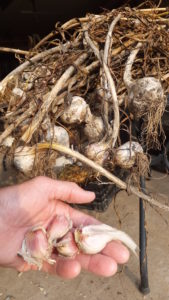September through November is the best time for getting the work done that you were putting off in your sustainable landscape.
In Fall, many gardeners anticipate putting their tools away and some even pray for a hard frost to put an end to the grueling work of watering, weeding and harvesting. But then reality hits; they still have to rake leaves, cut back plants and get the waste to the compost site.
Not only is Fall the best time for planting perennials, shrubs and trees, but it also alleviates a lot of the fall work that gardeners face. Fall planting can also substantially reduce work the following season. What’s not to like about that?
My busiest time of year for planting in Central Wisconsin is from September until the ground freezes. That’s right! I get astonished looks from lots of people when they find out that in most years I install plants for customers until the end of November or the the start of December.

Annual rye is an easy grass to sow in early fall as a temporary ground cover to protect bare soils in northern climates.
There are only a couple of weeks in Spring when the conditions are right for planting. In Fall, there are at least two months of good planting weather. In Fall, plants are going dormant, the weather is cooler and this reduces stress on plants and people! Plants installed in the Fall have time to put out new roots and are established and ready to go by the following Spring.
Here are some other advantages of Fall planting:
- Plant cuttings, soil from pots and other organic debris can be incorporated in a new planting as valuable soil enhancers rather than hauling them away
- Tree leaves and grass clippings can be immediately used as a primary mulch for new plantings and topped with a bark mulch if desired
- Fall planting and mulching significantly reduces weeds the following season because the mulch settles and forms a barrier to weeds before the growing season starts.
- Cooler weather and reduction in the mosquito population make working outside a delight
- You can enjoy the following Spring instead of rushing around trying to get the work done
During this past winter in central Wisconsin, dry weather and lack of snow cover damaged even established plants. I recommend that new vegetation is mulched and watered weekly until the ground freezes. The combination of mulch and moisture, insulates the soil around plant roots, protecting them from extreme, low temperatures.
So, if you have put off getting plants int he ground this year, there is still time and Fall is the best time of the year to plant.

